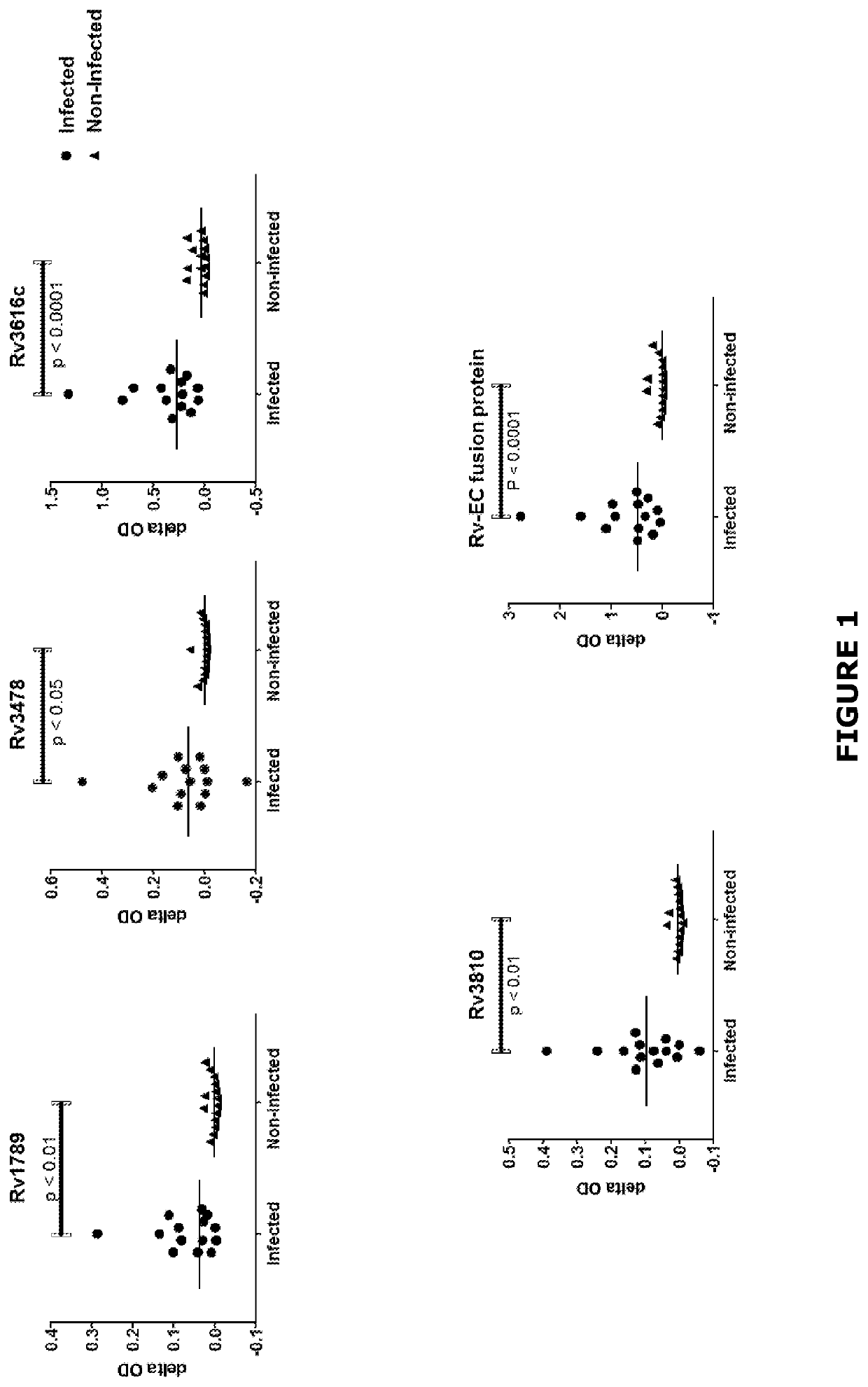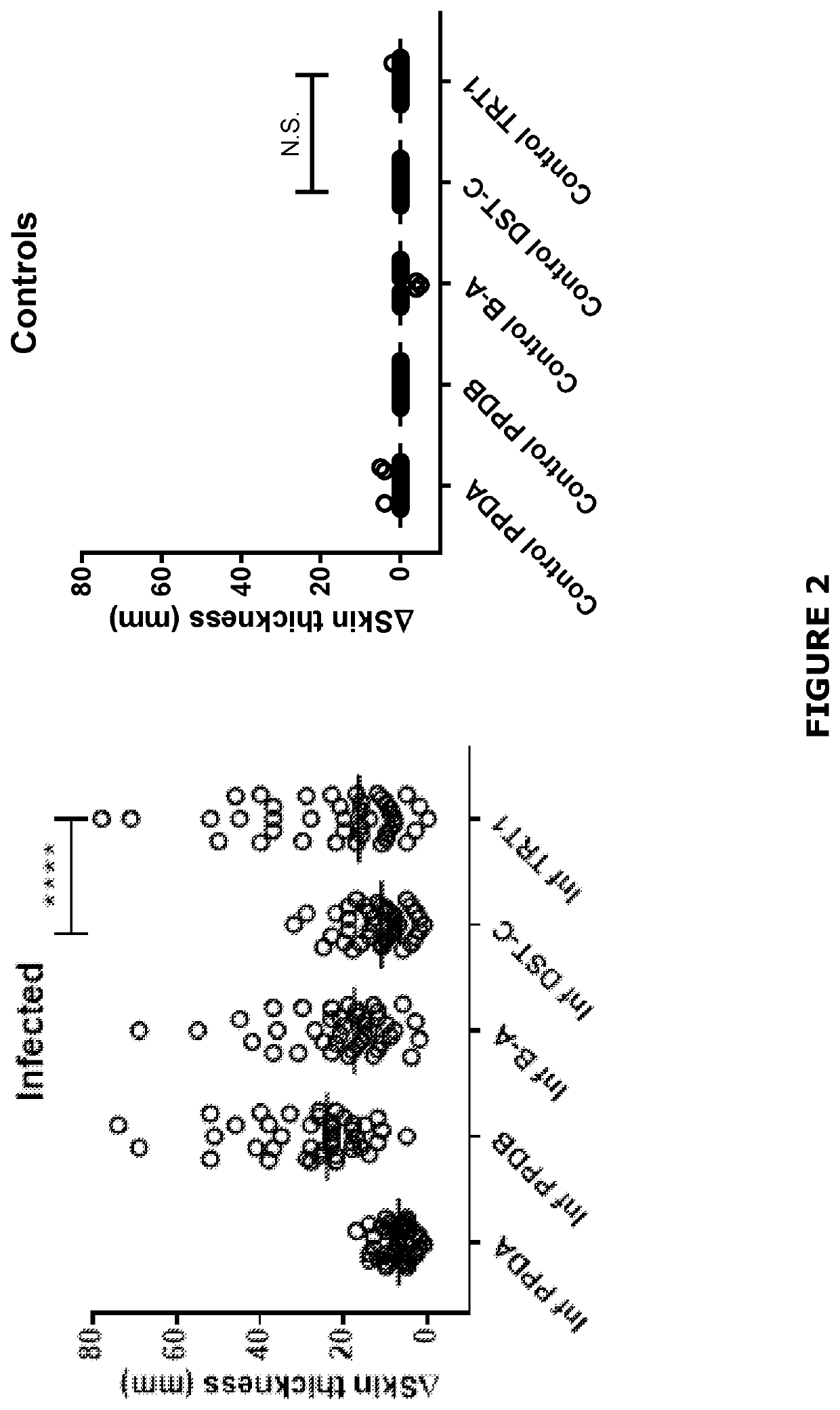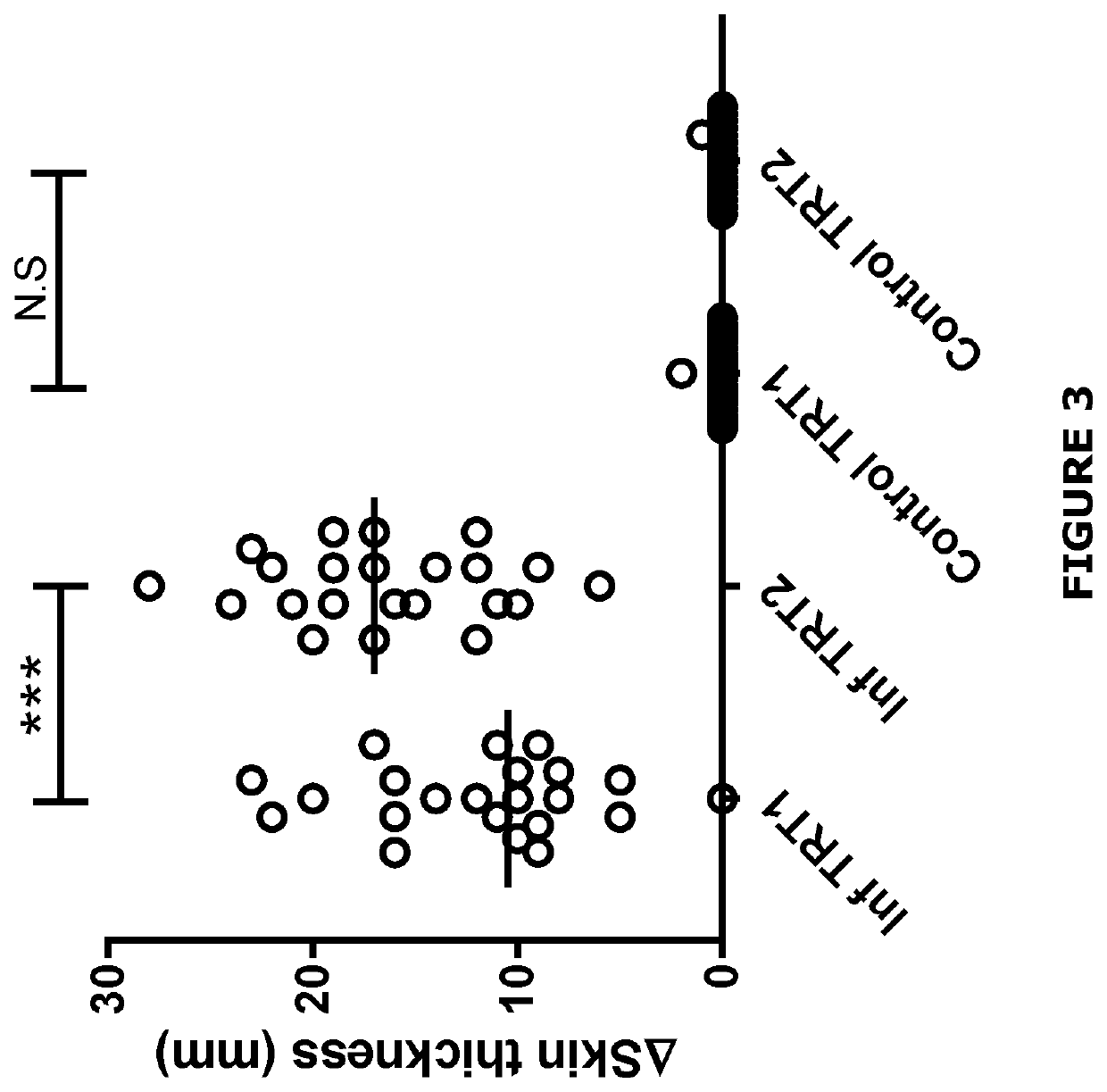Diagnostic reagent
- Summary
- Abstract
- Description
- Claims
- Application Information
AI Technical Summary
Benefits of technology
Problems solved by technology
Method used
Image
Examples
example 1
Production of Candidate Antigens
[0139]Eighteen candidate proteins were selected for testing (see Table 1). These proteins were sourced from commercial sources, when available, as recombinant proteins. However, for the majority of proteins, this was not possible. In these cases, overlapping synthetic peptide sets were designed and commercially produced using state-of-the-art high-throughput peptide synthesis chemistry.
Antigen Screening and Complementation
[0140]These antigens were screened in interferon gamma release assays (IGRA) using bio-banked peripheral blood mononuclear cells (PBMC) from previous experiments and projects. Samples were obtained from naturally infected field reactors as well as uninfected controls.
[0141]To down-select to the most promising candidate antigens, the following gating criteria were applied:[0142]Significantly stronger IGRA responses induced by antigens in PBMC from M. bovis infected animals compared to uninfected controls;[0143]Specificity (i.e. no res...
example 2
Testing TRT Reagents In Vivo by Skin Testing
[0149]Most of the antigens were produced as recombinant proteins by Lionex GmbH (Braunschweig, Germany). Only the antigen Rv3616c could not be produced as a recombinant protein as it proved to be lytic to hosts utilised for expression. To overcome this technical problem, a set of 48 overlapping synthetic peptides was produced (SEQ ID NOs: 97-144). The TRT1 cocktail (see Table 6) was formed by mixing this Rv3616c overlapping peptide set with the protein antigens (Rv1789, Rv3478, Rv3810, ESAT-6, CFP-10, Rv3615c and Rv3020c).
[0150]We also designed and procured a second Rv3616c cocktail of 20 peptides, composed of 40-, 25- and 20-mer peptides (SEQ ID NOs:187-206) which were combined with the recombinant proteins described above into TRT2 (see Table 6).
[0151]We infected 42 calves via the endobronchial route with around 10,000 CFU M. bovis AF2122 / 97. Six weeks later, skin tests were performed using PPD-A, PPD-B, DST and TRT1. Injection sites wer...
example 3
Testing TRT Reagents in Other Settings
[0158]We then investigated the TRT2 cocktail in other in vivo and in vitro animal categories. The other categories were naturally infected cattle, which is more reflective of a field situation, and in animals strongly sensitised to M. a. sso paratuberculosis antigens, which was achieved by vaccinating calves with the Gudair vaccine. These were compared to experimentally infected cattle and non-infected controls, as described above. Skin tests were performed using PPD-A, PPD-B, DST and TRT2. These results are shown in FIG. 6, including B-A, which represents the results of PPD-6 minus PPD-A (SICCT test). As shown in FIG. 6, statistically significantly stronger responses were induced in naturally infected calves following injection of TRT2 compared to DST injection (P6). These data further demonstrate that the TRT protein cocktail can significantly increase the strength of reactivity as compared to DST, without compromising specificity.
[0159]The hi...
PUM
 Login to View More
Login to View More Abstract
Description
Claims
Application Information
 Login to View More
Login to View More - R&D Engineer
- R&D Manager
- IP Professional
- Industry Leading Data Capabilities
- Powerful AI technology
- Patent DNA Extraction
Browse by: Latest US Patents, China's latest patents, Technical Efficacy Thesaurus, Application Domain, Technology Topic, Popular Technical Reports.
© 2024 PatSnap. All rights reserved.Legal|Privacy policy|Modern Slavery Act Transparency Statement|Sitemap|About US| Contact US: help@patsnap.com










